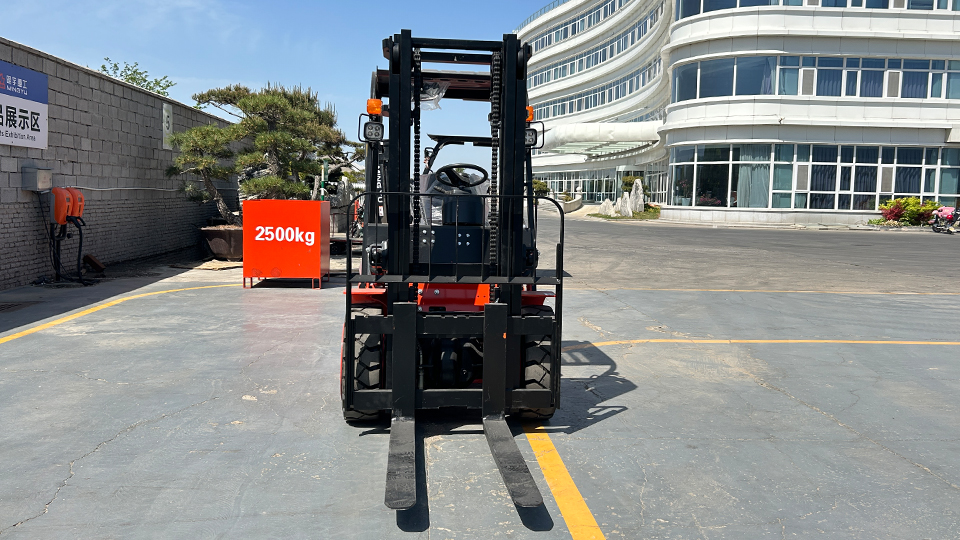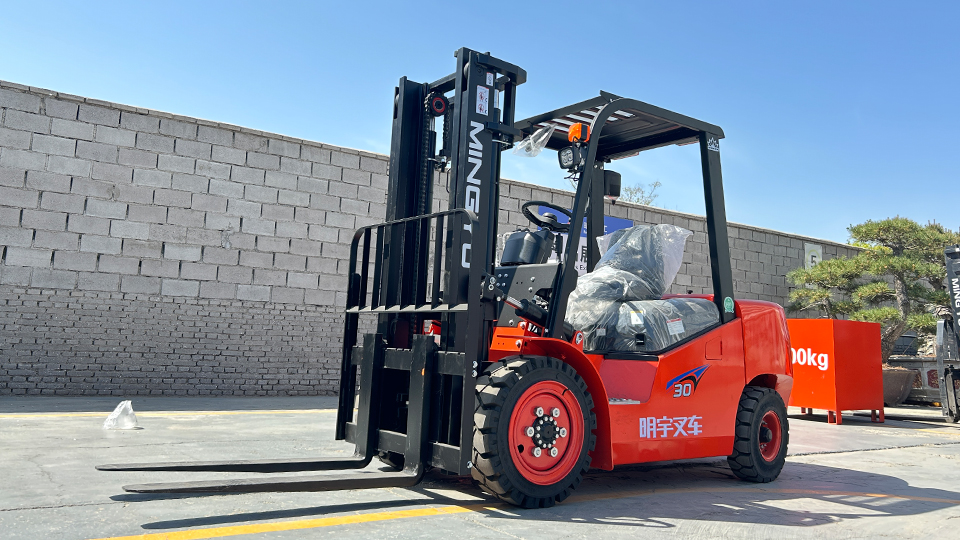
The Art of Gentle Giant: A Technical Guide to Safely Lifting and Moving Snowmobiles with a Forklift
While not its primary design function, a forklift can be strategically employed to lift and move snowmobiles in various scenarios, such as dealership inventory management, maintenance and repair facilities, or even for loading and unloading from trailers. However, the delicate nature of snowmobiles, with their exposed tracks, skis, and often lightweight yet bulky frames, demands a highly cautious and technically sound approach. Improper techniques can lead to significant damage to the snowmobile, the forklift, or, most importantly, cause serious injury. This comprehensive technical article delves into the methodologies, safety protocols, and best practices for safely and effectively picking up and moving snowmobiles using a forklift.
I. Understanding the Challenges: The Unique Nature of Snowmobile Lifting
Before attempting to lift a snowmobile with a forklift, it's crucial to acknowledge the inherent challenges:
Uneven Weight Distribution: Snowmobiles are not uniformly weighted. The engine and front suspension components often contribute to a front-heavy bias, while the track assembly distributes weight along the rear. This uneven distribution can make achieving a stable lift challenging.
Fragile Components: Exposed skis, delicate suspension arms, and the track itself are susceptible to damage from direct contact or excessive pressure. The body panels, often made of plastic or fiberglass, can also be easily scratched or cracked.
Lack of Dedicated Lifting Points: Unlike palletized goods, snowmobiles are not designed with specific lifting points. This necessitates the use of specialized lifting attachments or carefully considered support methods.
Potential for Slippage: The smooth surfaces of skis and the track can offer limited friction, increasing the risk of the snowmobile slipping during lifting or transport.
Operator Skill and Awareness: Successfully and safely lifting a snowmobile requires a highly skilled and attentive forklift operator with a thorough understanding of load dynamics and the limitations of both the forklift and the snowmobile.

II. Essential Equipment and Preparations: Setting the Stage for Safety
Prior to any lifting operation, ensuring the availability of the correct equipment and meticulous preparation are paramount.
Appropriate Forklift: The forklift selected must have sufficient lifting capacity for the snowmobile's weight. Consult the snowmobile's specifications and the forklift's data plate, considering the load center. A forklift with a lower profile mast may be advantageous for better visibility.
Specialized Lifting Attachments (Highly Recommended): Direct contact with the forklift forks is generally discouraged due to the risk of damage. Utilizing specialized attachments designed for handling non-palletized items is strongly recommended:
Carpet Poles or Rams: These cylindrical attachments, when sleeved with protective padding, can be carefully inserted through the track window (if present and appropriately sized) to provide a secure lifting point. The pole must be long enough to adequately support the snowmobile's length.
Fabric Slings and Spreader Bars: Heavy-duty fabric slings, positioned strategically under the snowmobile's frame and used in conjunction with a spreader bar, can distribute the lifting force more evenly and minimize pressure points. The slings must have a sufficient weight rating and be resistant to abrasion. The spreader bar prevents the slings from squeezing the snowmobile's body.
Custom-Designed Lifting Jigs: For repetitive lifting operations, custom-designed jigs that cradle specific snowmobile models can offer the most secure and damage-free solution. These jigs typically incorporate padded supports that conform to the snowmobile's contours.
Protective Padding: Regardless of the lifting method, ample protective padding made of durable, non-abrasive materials (e.g., thick rubber, industrial felt) must be used to cushion any contact points between the forklift or attachments and the snowmobile.
Heavy-Duty Ratchet Straps (Secondary Restraint - Use with Extreme Caution and Understanding): While not a primary lifting device, heavy-duty ratchet straps can potentially be used as a secondary restraint to prevent lateral shifting or tipping during very short movements over level surfaces. Crucially, these straps are not designed for lifting and should never bear the primary weight of the snowmobile. They should be used in conjunction with a primary lifting method and only when absolutely necessary to enhance stability during transit, and with the utmost care to avoid over-tightening and damaging the snowmobile's components. Never rely solely on ratchet straps for lifting.
Spotter(s): A minimum of one, and preferably two, trained spotters are essential. Spotters provide crucial visual guidance to the operator, monitor the snowmobile's stability, and can intervene if any issues arise. They must be positioned in clear sight of the operator and equipped with clear communication signals (e.g., hand signals, two-way radios).
Level and Stable Surface: The lifting and transport area must be a level and stable surface to minimize the risk of the forklift or the snowmobile becoming unstable.
Clearance: Ensure adequate overhead and side clearance throughout the lifting and transport path, free from obstructions such as low ceilings, pipes, or other equipment.
III. The Lifting Procedure: A Step-by-Step Technical Approach
The lifting process requires meticulous attention to detail and slow, controlled movements.
Pre-Lift Inspection: Before commencing the lift, conduct a final inspection of the snowmobile, the lifting equipment, and the surrounding area. Ensure all padding is correctly positioned, straps (if used as secondary restraints) are correctly placed (but not tightened), and spotters are in position and understand the plan.

Positioning the Forklift: Carefully maneuver the forklift into position, aligning the chosen lifting attachment with the intended contact points on the snowmobile. Maintain a slow and controlled speed.
Gentle Engagement: Slowly and gently engage the snowmobile with the lifting attachment. Ensure the load is properly cradled or supported and that there are no undue stresses on any specific parts. If using a carpet pole, insert it smoothly through the track window, ensuring adequate support along the snowmobile's length. If using slings, ensure they are evenly positioned under the frame and the spreader bar is correctly aligned.
Initial Lift (Just Off the Ground): Lift the snowmobile just a few inches off the ground. This allows for a crucial stability check. Observe the load for any signs of imbalance, slippage, or stress on the snowmobile's components. The spotters should closely monitor the lift from all angles.
Adjustments (If Necessary): If any instability or uneven lifting is observed, immediately lower the snowmobile back down and reassess the lifting points and attachment positioning. Make necessary adjustments to ensure a balanced and secure lift.
Controlled Ascent: Once stability is confirmed, slowly and smoothly lift the snowmobile to the desired height, maintaining a level orientation. Avoid sudden or jerky movements of the mast or the forklift itself. The spotters should continue to monitor the load throughout the ascent.
Transit (If Applicable): If the snowmobile needs to be moved, lower it to the lowest safe carrying height (typically just above the ground) to maximize stability. Travel slowly and cautiously, adhering to any established traffic patterns and maintaining clear visibility. Avoid sharp turns or sudden stops. If secondary restraint straps are used, ensure they are taut enough to prevent lateral movement but not so tight as to cause damage.
Lowering the Snowmobile: When positioning the snowmobile for placement, maneuver the forklift slowly and carefully. Gradually lower the snowmobile onto the intended surface, ensuring it is stable and properly supported before fully releasing the lifting attachment.
Disengagement: Once the snowmobile is safely positioned, slowly and carefully disengage the lifting attachment. Ensure no parts of the attachment snag or damage the snowmobile during withdrawal.
IV. Critical Safety Considerations: Prioritizing Prevention
Safety must be the paramount concern throughout the entire snowmobile lifting process.
Qualified and Trained Operators: Only certified forklift operators who have received specific training on safely handling non-palletized loads and the unique challenges of lifting snowmobiles should perform these operations.
Thorough Risk Assessment: Before each lift, conduct a thorough risk assessment, identifying potential hazards and implementing appropriate control measures.
Adherence to Manufacturer Guidelines: Always consult and strictly adhere to the operating manuals for both the forklift and any attachments being used.
Communication: Maintain clear and constant communication between the operator and the spotters using agreed-upon hand signals or two-way radios.
No Passengers: Never allow passengers on the forklift.
Secure the Snowmobile for Long Transit: If transporting the snowmobile over longer distances or on uneven terrain, it should be properly secured to a suitable trailer using appropriate tie-down straps specifically designed for securing vehicles. The forklift should only be used for the initial loading and final unloading.
Regular Equipment Inspection: Regularly inspect the forklift and all lifting attachments for any signs of wear, damage, or malfunction. Remove any damaged equipment from service immediately.
Awareness of Surroundings: Maintain constant awareness of the surroundings, including pedestrians, obstacles, and changes in ground conditions.
Never Exceed Rated Capacity: Absolutely never exceed the forklift's rated lifting capacity. Consider the weight of the snowmobile and any attachments being used.
Gentle and Controlled Movements: Emphasize slow, smooth, and controlled movements of all forklift functions. Avoid abrupt starts, stops, or turns.
V. Alternatives and When to Avoid Forklift Lifting
While a forklift can be used in specific circumstances, it's essential to recognize that it may not always be the safest or most efficient method for moving snowmobiles. Consider the following alternatives:
Snowmobile Lifts and Dollies: Purpose-built snowmobile lifts and dollies are specifically designed for safely lifting and moving snowmobiles with minimal risk of damage. These often feature padded platforms and securement mechanisms.
Manual Lifting with Adequate Personnel: For lighter snowmobiles and short distances on level surfaces, a sufficient number of personnel using proper lifting techniques may be a viable alternative. However, always prioritize safe lifting practices to prevent injury.
Trailers with Ramps: Loading and unloading snowmobiles from trailers using built-in or portable ramps is often the most practical and safest method for transportation.
Avoid using a forklift to lift a snowmobile in the following situations:
Lack of Appropriate Attachments: If suitable, padded lifting attachments are not available.
Uneven or Unstable Ground: The lifting and transport area is not level and stable.
Confined Spaces: Insufficient maneuvering room for the forklift.
Long Distance Transport: Forklifts are not designed for transporting vehicles over significant distances.
Untrained Operators: If a qualified and trained operator is not available.
Doubt or Uncertainty: If there is any doubt about the safety or feasibility of the lift.
VI. Conclusion: Respecting the Load and the Machine
Lifting a snowmobile with a forklift is a task that demands respect for both the delicate nature of the snowmobile and the operational limitations of the forklift. By adhering to meticulous preparation, utilizing appropriate lifting equipment, employing safe operating practices, and prioritizing clear communication, it is possible to move snowmobiles efficiently and with minimal risk of damage or injury. However, always consider safer alternatives when available and never compromise safety for expediency. Continuous training, a thorough understanding of the equipment, and a commitment to best practices are essential for mastering this specialized application of forklift operation.
Name: selena
Mobile:+86-13176910558
Tel:+86-0535-2090977
Whatsapp:8613181602336
Email:vip@mingyuforklift.com
Add:Xiaqiu Town, Laizhou, Yantai City, Shandong Province, China